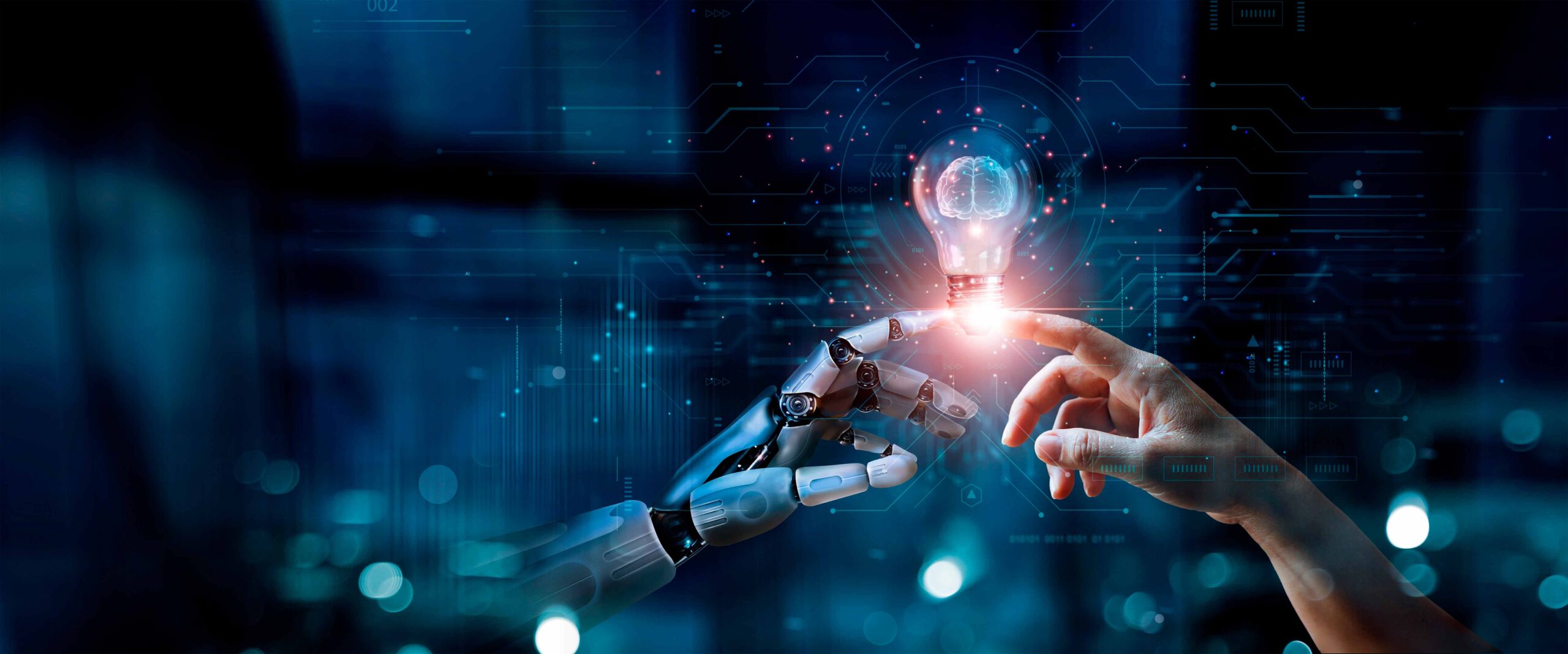- Sectors
- Aerospace & Defense
- Big science
- Fintech
- Insights

Robotics is playing a pivotal role in transforming the way we work and know the world today. From production lines to office environments, robots are emerging as key contributors to the world of work, revolutionising efficiency, productivity and the very nature of our daily tasks.
The first mechanical automata, ingenious mechanisms designed to perform specific tasks automatically, are today considered to be the forerunners of robotics as we know it. Their origins can be traced back to ancient Greece and the medieval Islamic world. As early as the 4th century BC, Heron of Alexandria, a Greek inventor and mathematician, created a series of automatons, such as the “Heron’s Bird”, which was steam-powered and capable of moving and making noise. As early as the 9th century, the Banū Mūsā brothers built automata such as an automatic water clock.
It was during the European Renaissance that automata became even more popular, with renowned figures such as Leonardo da Vinci designing and building several mechanical automata, including a mechanical lion that could walk and move its jaw.
However, the beginning of the 20th century could be considered as the date of the true emergence of modern robotics. In 1921, the Czech writer Karel Čapek coined the word “robota” in his play “R.U.R.”, which means “forced labour” in Czech. The term became popular and began to be associated with autonomous machines. In the 1950s, engineer George Devol and scientist Joseph Engelberger created the first industrial robot, called “Unimate”, used on the General Motors assembly line. Since then, robotics has evolved rapidly, encompassing fields such as artificial intelligence, automation and human-machine interaction, transforming the way we live and work.
After the aforementioned arrival of Unimate, many advances have been made in the field of robotics, including the following:
Today, advances in Autonomous Robotics and Artificial Intelligence have given rise to autonomous vehicles, drones, or autonomous robots that are already transforming entire industries and changing the way we interact with technology.
When discussing robotics and ethics, mention is often made of the writer Isaac Asimov, who left an indelible mark on the world of robotics with his literary contributions and his unique vision of human-robot interactions. Asimov is best known for his “Laws of Robotics”, a set of ethical principles that have significantly influenced public perception and ethical discussions surrounding artificial intelligence and robotics. Asimov’s Three Laws of Robotics are:
1. First law: A robot shall neither harm a human being nor permit, through inaction, a human being to be harmed.
2. Second Law: A robot shall obey orders given by human beings, unless such orders conflict with the First Law.
3. Third law: A robot will protect its own existence to the extent that such protection does not conflict with the First or Second Law.
Although Asimov’s laws are a work of fiction, they have stimulated debates and reflections on how to develop ethical and safe robotic systems in reality. The idea of establishing sound ethical principles to guide the development and implementation of robotics continues to be a major concern in research and industry today.
As robots become more sophisticated, human-machine collaboration is becoming a palpable reality. In office environments, robots can take on administrative and repetitive tasks, allowing employees to focus on activities that require human skills, such as decision-making, creativity and empathy.
While some fear that robotics may replace jobs, it is also creating new job opportunities. Robot creation, maintenance and programming are growing fields that require specialised skills. Professionals who acquire robotics skills will be well positioned to take on key roles in the design, implementation and supervision of robotic systems.
In addition, robotics is driving the emergence of new industries. From the development of assistive robots in healthcare to the programming of drones for various applications, there is a wide range of emerging opportunities. The ability to adapt and learn about these technologies will be essential for the worker of the future.
Robotics is not only revolutionising production and the work environment, it is also leaving an indelible mark on education and job training. As we move into a digital age, the integration of robotics into these fields offers exciting opportunities and transformative challenges. Some of the current applications of robotics in educational settings include:
– Using robots as instructors: through the use of simulators, professionals from different industries such as aviation, manufacturing or healthcare can train in a realistic and safe way.
– Personalised learning: Robotic systems equipped with artificial intelligence can be adapted to the individual needs of the students and can evaluate the progress of each one, identifying areas for improvement.
ARQUIMEA, as a technological company that operates in highly demanding sectors at a global level, has a wide range of solutions that provide answers to problems as diverse as the control of critical areas through robotic falconry or the robotization of traditional microscopes, as is the case of its ISAS PRO system, which optimizes the time and precision of the seminal analysis during the animal reproduction process.
In addition, ARQUIMEA, from its research center located in the Canary Islands, has a research orbital from which it is committed to highly dynamic and efficient robotics for the creation of technology focused on human-robot physical interaction with applications in health, mobility, space, defence or entertainment.
To this end, a multidisciplinary research approach is applied in lines such as robotic actuators for agile and efficient robots, perception and neuromorphic computing, or technology to increase space transport capabilities, among others.
In addition, all ARQUIMEA Research Center projects belong to the QCIRCLE project, co-funded by the European Union, which aims to create a center of scientific excellence in Spain.
“Funded by the European Union. Views and opinions expressed are however those of the author(s) only and do not necessarily reflect those of the European Union. Neither the European Union nor the granting authority can be held responsible for them.”
